-


Professor, Graduate School of Media Design, Keio University / Chair of DCEXPO Organaiging Commitee
Susumu Tachi
Led by the development of CG, 3D, and virtual reality or robots and human interfaces, digital contents have departed from their existence as plain hardware or simple boxes. Rather, through the power of the digital, they have taken on the role of contents that are perceived as valuable and attractive products on their own. As “visible software” or “points of contact for people,” the use of digital contents is no longer limited to the areas of games and animation, but is beginning to expand to every industry, including the medical and bio-medical industries. In the area of artistic expression, digital contents are also contributing to the generation of new cultural forms.
Recently, the word “cool” is often being used in connection with digital contents, such as in “Cool Japan” and “Cool Innovation.” While “cool” means “wonderful,” “groovy,” or “intriguing” in this context, it also shares the nuance of the traditional Japanese concept of “iki” or “sui,” which means “chic” and also “essence.” Many pioneering inventions in Japan had sprung from the Japanese spirit and philosophy. These are not simply inventions; rather, they can be perceived as stylish products that reflect a Japanese originality. It is our sincere wish to work together with all of you in order to make this DIGITAL CONTENT EXPO a “cool” bridge that links “invention” to “innovation.” -
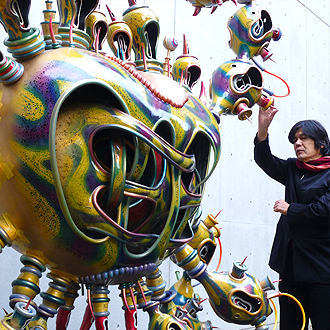

Professor Interfaculty Intiative in Information Studies The Univeversity of TOKYO
/ Cair of ASIAGRAPH Organizing CommiteeYouichirou Kawaguchi
The culture and arts that support Asia’s digital contents are traditionally refined, dense, and unusual. By scattering their sparks far and wide, Asia’s traditional arts and advanced scientific technology have the potential to generate a diverse multitude of fruitful products for industrial societies in the near future.
Based on the fundamental creativity that is inspired by the physical and biological elements of nature, science/technology and the arts should be entwined in the same way as a double helix is, and be reborn as a new energy entity.
What do we need to do in order to ensure that the five senses of humans stay closely linked to cutting-edge science and technology, lead the world with a highly complicated creativity, and continue to grow in a sustainable manner?
To that end, we cannot deny the importance that a “field” of exhibition plays in enabling the complex evolution of the human senses in tandem with their mutual communication, convergence, and stimulation with the advanced science and technology. The creation of such a “field” will help us overcome the recent earthquake disaster while generating a highly refined form of creative energy that is uniquely Asian.
ASIAGRAPH, which will take place at the DIGITAL CONTENT EXPO, will carve out a Pan-Asian, next-generation “field” against the background of Asia’s unique and diverse cultures, encompassing even Brazil which is located on the other side of the world. Through this “field,” we hope that you will be able to locate a horizon filled with the wonderful dreams of new hopes. -
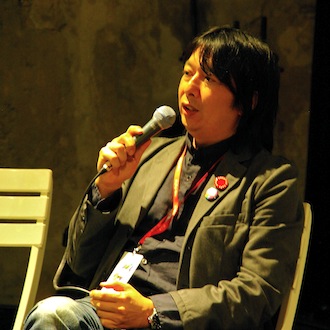

Project Manager Department of IRT Content Study THE University OF TOKYO / Eexecutive producer,DCEXPO
Masaru Ishikawa
Contents from DIGITAL CONTENT EXPO were put together and exhibited as part of the JAPAN CREATIVE CAFE in the FUTUR en SEINE held in Paris, France. Contents such as dance performances by a humanoid robot (Miim) and NETDUETTO resonated with the audience in France, and many people visited the exhibition over consecutive days.
The Internet population has apparently exceeded 2 billion this year (Internet World Stats). As we welcome an era in which one-third of the world’s population is connected via the Internet, we can no longer hold back from crossing national boundaries. There is a need to take swift steps to establish a contents industry in the global market, in which people of different cultures may gain a sense of the values of others while holding on to their own unique identities. Christian Sautter, Deputy Mayor of Paris who had visited the Japanese exhibition area, commended Japanese contents in his speech, commenting, “Japanese contents demonstrate the perfect blend of technology and humanism.” I think that we are witnessing immense potential for the overseas dissemination of a content industry of Japanese origin that is uniquely ours. For that reason, one of the new roles that is demanded of the DIGITAL CONTENT EXPO is that of providing as many opportunities for exchange as possible, in order to allow even more companies and creators to develop overseas. That was what gained a strong sense of in Paris.
※ The actual exhibits at the JAPAN CREATIVE CAFE can be viewed on DCEXPOTV(USTREAM).
http://www.ustream.tv/channel/dcexpotv-paris -
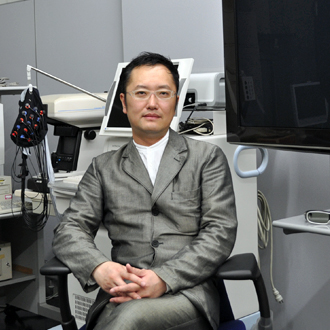

Professor Faculty of Science and Engineering, Waseda University / Cair of International 3D Fair 2011 in Tokyo Organizing Committee
Takashi Kawai
S3D (Stereoscopic 3D images) have taken on an increasingly active role in the movie industry in recent years. The use of these images has also spread to areas such as television and smart phones, and the extent of their diffusion is such that 2010 has been coined “the first year of the 3D era.” The role of the DIGITAL CONTENT EXPO is to act as a “bridge” spanning the “valley of death” that exists between the birth of new technologies and their commercialization. In consideration of this fact, despite the fact that S3D has already been commercialized, some see a need to build another “mountain” in order to achieve greater penetration and acceptance as a form of media. The “mountain” that we refer to here is the “mountain of contents.” Contents are produced by creators, and creators seek methodologies to express and freely manipulate S3D. Furthermore, contents are received by users, and users must be media literate in order to enjoy S3D in a safe and comfortable manner. These refer to education in the broadest sense of the word, and are perceived as important issues that should be taken up in the International 3D Fair 2011 in Tokyo. It is hoped that the International 3D Fair 2011 in Tokyo will become a stepping-stone in the move toward the period of popularity for S3D.
-


Professor GARADUATE SCHOOL OF MEDIA DESIGN, KEIO UNIVERSITY / Chair of Content Technology Exhibits(ConTEX) Organizing Committee
Masahiko Inami
What, exactly, does the “content technology” in the name “Content Technology Exhibits (ConTEX)” refer to? ConTEX defines next-generation content technology as experience-based technology that engages the various human senses in an interactive manner.
Conventional content is independent of its means of delivery, as in the case of images and the DVD. However, content and media are closely related in next-generation content technology. For instance, the “HRP-4C Miim” unveiled by the National Institute of Advanced Industrial Science and Technology (AIST) at ConTEX last year has drawn more than 1.2 million hits on YouTube to date, from viewers all over the world. It was also extremely well-received at the FUTUR en SEINE held in Paris.
http://www.youtube.com/watch?v=swyWSGc3dLE
With the high-performance humanoid HRP as its media, Miim succeeded in inspiring people worldwide with its rendition of a song by Japanese pop group ELT, and dance steps choreographed by Sam from Japanese pop group TRF that corresponded to the characteristics of the robot’s movements.
People gain inspiration not only from the technology itself. Still, technology that can inspire people certainly exists. A single experience is worth a thousand views. Do visit the DCEXPO to get your experience of next-generation content technologies. -
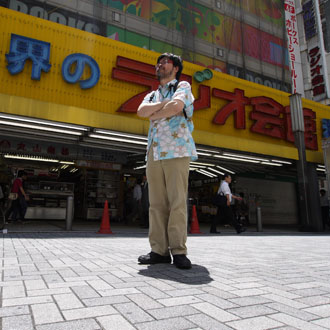

General Manager ASCII Research Institute ASCII MEDIA WORKS Inc / ConTEX committee
Satoshi Endo
Why is Japanese culture, such as its comics and animation, termed “cool”? Does the “cool” factor lie in the “geeky” (Otaku) pictures and adorable (Kawaii) fashion? Those are not the only factors. The social atmosphere and processes that are able to produce this culture are new. We have no problems with showing people the almost deplorable movements of our private and personal hearts. There is something that comes into direct contact with the heart of the individual. The culture is “cool” because it is free and unrestrained (“hip”).
There are also those who feel that “boy fiction” comics (shonen manga), and Japanese home appliances and daily necessities, are, in fact, the things that are “cool.” Electronics, symbolized by the television remote control, were what characterized Japanese home appliances after the 1970s. The microcomputer technology that surfaced in the later half of the 1970s was effortlessly incorporated into items ranging from toys and cameras, to rice cookers, karaoke systems, health equipment, and industrial machinery. We could say that the ease with which we made the transition created the Japan that we see today. It was also how Japanese products came to be known as being “cool.” By bringing together “heart” and “technology,” the DCEXPO is expected to be an event that allows people to grasp the things that are of great importance. -
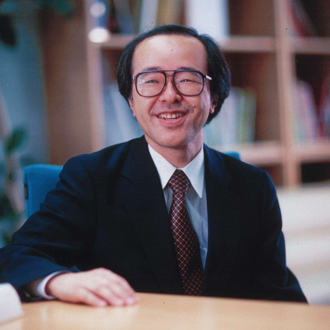

Professor The University of Tokyo / ASIAGRAPH Organizing Committee
Michitaka Hirose
While this may seem a little abrupt, I would like to begin with the topic of tea. Japanese tea ceremony, which has also garnered much attention from other countries, is a form of culture that is uniquely Japanese, as well as highly spiritual. Nevertheless, tea utensils, such as drinking bowls and bamboo whisks, are needed to make the tea. One of the roles of the tea master is to preserve the tea utensils that have been passed down from previous generations. After all, while we may perceive these utensils as material “things,” it is interesting that we cannot neglect the role of these “things” in tea ceremony, which is itself centered on the concept of “things” as events.
To date, Japanese industries have repeatedly developed around material “things.” Toward the end of the 20th century, we entered an era focused on the characteristics of “lightweight, slim, short, small.” This was, unmistakably, a system centered around “things” in the form of intelligent products, such as personal computers. As we entered the 21st century, we were forced to conduct a thorough review of such a system. The essence of the word “content” is no other than the act of creating a superstructure of a “thing”-centric system. In other words, it is the act of building a superstructure centered on events such as tea ceremony parties, on top of the collective of “things” that tea utensils form, to create the tea ceremony “system.”
Visitors will be able to see new “things” at the DC-EXPO exhibition, and to engage in discussions about “things” as events—that is, how to utilize “things”—at international conferences including ASIAGRAPH, which is convened in conjunction with the EXPO. Should we not begin to think seriously about the types of systems that we should create in the future to come? -
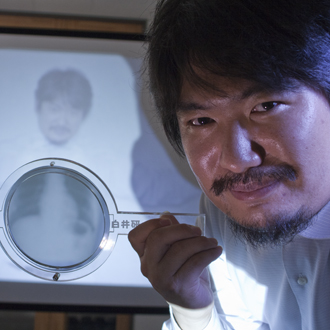

International 3D Fair 2011 Organizing Committee
Akihiko Shirai
In recent years, in my role as a committee member engaged in the preparation for ConTEX and the International 3D Fair, I have been involved in the selection of works and exhibition development under the exciting theme of “Beyond ‘Galapagos’,” worked behind the scenes for the 3D screening event, and undertook media preparations. Having worked for many years in the research of entertainment technology and digital content between Japan and France, I feel that the Japanese people have an intrinsic “talent” in the field of digital content.
Is that talent not a form of innovation that can bring enjoyment for tomorrow?
“SF” is not fiction, and people do not find it surprisingly interesting if it simply appears before them. For instance, even if you say, “The Oedo Line operates linear motor trains,” people do not experience any surprise or enjoyment. Although the future comes to us every single day, perhaps what people truly want to experience is an “enjoyable tomorrow.”
In the past, many young people have, through the DCEXPO, become enlightened (“Such a world actually exists!”), had new encounters (“My research can be useful in these ways!”), and gained courage (“Japan is truly amazing!”). I have witnessed countless such moments. The “digital content” that we talk about in the DCEXPO is brimming over with that “something” that empowers youth. -
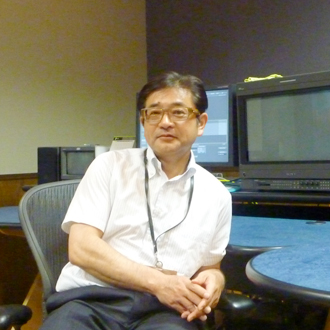

Officer Pasnasonic Visuals, Inc. / International 3DFair 2011 in Tokyo Organizing Committee
Kouji Kizaki
Our company was in charge of the 3D recording and production at the Girls’ Generation (Korean girl’s unit) concert at the National Yoyogi Stadium some time back, and the experience left me with some strong impressions. I was involved in the production of numerous 3D videos last year, touted as the first year of the 3D era, and the year before last, and the production environment has taken a huge leap forward. In this latest recording, we used a total of thirteen 3D cameras comprising six 3Ality, two Elemental Technica, and five 3DA1, as well as eleven 2D cameras. 2D can also be converted to 3D and used in the recording. If we are able to take the aim from many different positions, we will be able to stage the distance with the artistes. We feel that the distance is far if we look at the stage past the countless number of audience in the front, using the camera in the distance. If we switch to the camera close-by, on the stage, we feel as if we are suddenly much nearer. We come under the illusion that we are standing on the stage. We can say that this sensation of distance constitutes a significant part of the inspiration that 3D brings. When I was younger, I studied how to cut and edit film using Kurosawa’s works as my model. However, there are 3D staging methods for 3D films. I feel that we have reached a phase in which young creators have the ability to inspire us in unprecedented ways through their discovery of many such interesting methods. I hope that DCEXPO will be a place that allows them to make many such discoveries.
-


ASIAGRAPH Organizing Committee
Tetsurou Ogi
On 24 July, analog television broadcast came to an end. We made the transition to digital broadcast, signaling the true arrival of the digital age. The history of analog television broadcast thus far has developed along with contents such as professional baseball, professional wrestling, and popular Japanese music. However, we are witnessing changes in the type of content that receives high levels of viewership on television in the era of digital broadcast. This transition to digitalization does not apply only to television, but is also a phenomenon observed in fields as diverse as cinemas, museums, planetariums, art, mobile phones, games, electronic books, and digital signage. In contrast with conventional methods of expression, concepts such as 3D, interactivity, and bidirectional communication are also incorporated. It is likely that the production of content that is suitable for such digital environments will become increasingly important in the future.
Furthermore, in the digital age, content creation will no longer be the work of professional creators alone. The digital age is characterized by the fact that it will become possible for anyone, from children to adults, to create content and to disseminate their own content via networks. The Digital Content EXPO and ASIAGRAPH aim to bring excitement and inspiration to the countless number of people responsible for the digital society in the future, and we hope that the event will serve as an opportunity for us to contribute significantly to the future development of digital content. -


Professor, The University of Tokyo Interfaculty Initiative in Information Studies / ConTEX Organizing Committee
Junichi Rekimoto
A while ago, I became addicted to a certain company’s capsule-type espresso machine, and started to order coffee capsules periodically. I order the capsules online once I run out of them, but the time between order and delivery is so incredibly short that I feel as if I could actually download the coffee capsules on the spot. In recent times, content is no longer not limited to graphics or video images; even physical objects are also being subjected to production, distribution, sharing, and processing. This trend, represented by terms such as open hardware, digital fabrication, or personal fabrication, is likely to bring revolutionary changes to conventional content industries. Just a little while ago, it was common to tailor and make clothes and bags in one’s own home, and if we travel even further back in time, footwear (such as straw sandals) was also “fabricated” in the home. The culture of using uniform, mass-produced industrial products does not actually have a long history. Through technologies such as 3D printers, the production of material objects has come to be perceived as content. Going forward, we may even be able to download and print object design blueprints from the Internet, or have them delivered from specialized fabrication laboratories. Ultimately, we may live to witness the coming of an age in which all material things are treated as content.
-
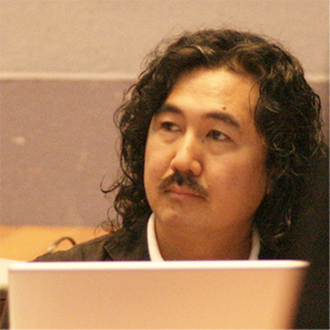

Professor, The Business Administration Department Director, The Center for Intellectual Property and Multi-Lingual Digital media center Bunkyo Gakuin University / Representative, ASIAGRAPH CG Art Gallery
Yasushi Kitami
Since 2001, we have been involved in activities for providing Asia’s finest CG creators with a venue to publicize their works at the ASIAGRAPH CG Art Gallery. Furthermore, through the establishment of the calls for works in 2007 we have brought together 500 CG works every year from all over the Asian region including China, South Korea, Taiwan, Singapore, Thailand, Malaysia, the Philippines, Vietnam, Indonesia and India.
Looking at Asia as a whole over the past 10 years, there has been a tremendous evolution in the creativity of young creators. It is clear that the preeminence of Japanese creators which was so apparent 10 years ago can no longer be claimed.
There has been a rapid shrinking of the gaps formerly seen between the various countries of Asia in the quality level of the works which these countries submit, not only in the area of technology but also in terms of concept work including planning, scenario and worldview. This is evidence of the consistently high-quality and creative human resources which are stockpiled within the Asia region as a whole. On top of this, particularly noteworthy is the strong sense of fellow feeling that so many of these creators feel with Japanese culture and sentiments through the Japanese anime, manga, games and the like which they have grown familiar with over so many years. From this we can see how young Asian creators are able to combine their powers across national boundaries. We look forward to seeing the creative powers of young Asian creators brought together in the near future to bring about a “new Asian expression” such as the world has never seen before. -


Engineer , Computer Vision team Team Lab Inc.
Koki Saito
In this year’s TEAMLAB, we present two items: TAMELAB TABLE and Teamlab mirror.
TEAMLAB TABLE is a table which has been developed with usage in restaurants etc. in mind, and which interacts with the coasters that are placed on it. The concept is based on the idea that the user’s own coaster interacts with the coasters of other people, causing a line to be formed on the table joining the two, thus creating opportunities for communication between people who have never seen each other before.
Teamlab mirror is a mirror which combines the user’s face with various shirts and pants/skirts to see what they look like together, experimenting with the concept of “Making it possible to try on 100 outfits a minute.” Based on the idea that this could make trying on clothes in clothing stores less stressful, this system enables virtual trying-on of clothes at a high speed and can be operated by smartphone. Both of these are systems which can become an intimate part of our lives. We believe that things found in regular day-to-day life—tables, mirrors and the like—can be made more interesting and useful through the addition of technology.
We hope that the DCEXPO will become the starting point for these kinds of ideas. -


President, SOLIDRAY CO.,LTD
Masayuki Kambe
Twenty-five years have passed since the establishment of Solidray as a company specializing in 3D scenography. Long though 25 years sounds, this time has passed very quickly. In the beginning, we faced strong opposition from those around us, who told us “There are no companies anywhere in the world specializing in 3D. You’re all amateurs when it comes to management – even if you start a company, it will quickly fold. How can you take a child you have given birth to and turn it out onto the streets?” That was 3D—a word that has recently become an everyday part of our language, with 3D movies and 3D television now commonly found everywhere. However, I feel a strong sense of unease. Is there really a 3D boom? Is there really a need for 3D?
At this year’s DCEXPO, we are occupying the center stage to take up the challenge posed by this question. At this event, which brings together people from companies which make effective use of 3D right now and those which are hoping to make effective use of 3D in the future, we will discuss the future of 3D while watching participants’ 3D movies on the big screen. -
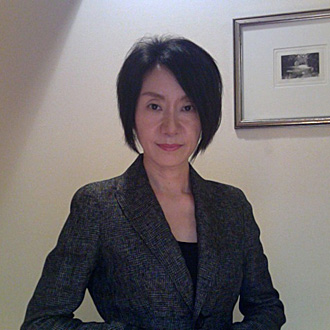

Secretary General at the Computer Graphic Arts (CG-ARTS) Society
Ayumi Miyai
As technology progresses, means of expression also evolve. Last year, which has been called “the first year of the 3D era.” we had the opportunity to work on the development of a full-fledged education system for popularizing education in S (stereoscopic) 3DCG animation.
We have set out an array of everything needed to start instruction right away, including standard syllabuses of lectures and exercises, electronic textbooks comprising a knowledge base, S3DCG anime footage-based teaching materials, asset data, electronic workbooks which break down creation methods in detail, and problem exercises and tests for measuring learning outcomes. In August this year, we held the Workshop for Educators, where leaders from educational organizations and companies created unique educational programs and teaching materials using these educational systems.
At the Symposium on Popularizing Practical Education in S3DCG Animation, the results of the workshop will be reported via presentations on teaching methods given by student representatives and presentations on the characteristics of workshops given by lecturers, and panel discussions will be held on boosting the skills of educators. We look forward to having the opportunity to consider the question of how education of students at universities and vocational schools and of practitioners in the fields of games and animation should be carried out, and to think about the importance of training for educators.
For many years, contents-related education in Japan has been dominated by “experts telling others about their experiences and their mindsets,” but in order to foster creators for the coming age it is vital that creators are educated through systematically formulated theories, methods and rules which form the foundations for education; we need to have educators capable of putting such education into practice.












